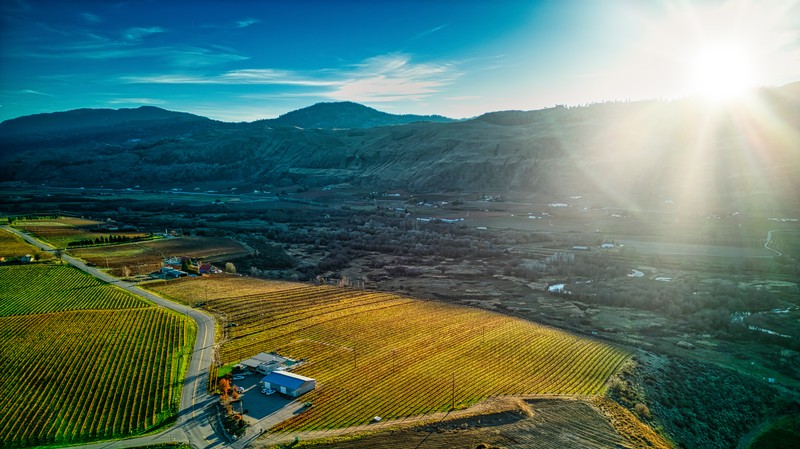Black Hills Estate
Blog
Reimagining viticulture on the Black Sage bench

Our original estate vineyards, Sharp Rock and Double Black Vineyards, date to the mid-1990s, shortly after the first significant plantings of Bordeaux red varieties on the Black Sage Bench. This represented a dramatic paradigm shift for the South Okanagan, as winegrowers transitioned from cool-climate white grapes to late-ripening varieties like Cabernet Sauvignon and Merlot. While today we know these varieties thrive on the Black Sage Bench, that wasn’t the case 25+ years ago.
Many of the pioneering vineyards, including our own, were planted to maximize fruit ripeness. That was for good reason. Winegrowers wanted to ensure they could reliably ripen fruit year after year. After all, Cabernet Sauvignon can be unforgiving when it is green and underripe.
A lot has changed in a relatively short period of time. The industry has matured; technology has evolved; and, perhaps most critically, our climate has changed. My Master of Wine research paper showed that the average temperature in Osoyoos has increased every decade since 1979. Not only is the growing season warmer, but we now experience more days over 35°C than ever before. We have gone from the margins to the extremes.
To adapt to these changes, we started planning the redevelopment of our vineyards over three years ago. You do not decide to replant a vineyard overnight, especially when it is the calibre of Sharp Rock or Double Black Vineyard. Today, if you drive by the estate, you can see we’ve started the next phase of this project: removing the original plantings. What you do not see is the years of work that went into reaching this point. But you’ll be able to taste it in the near future.
The goal is evolution, not revolution, as we continue to build the Black Hills legacy. Increasingly, our concern is over-ripeness, not under-ripeness. We are looking to retain freshness as growing seasons get warmer and extreme heat events become more frequent. It is more than just ensuring our wines continue to be elegant and finessed. It is essential to producing wines that are long-lived and age worthy.
To that end, we are putting a renewed emphasis on Cabernet Sauvignon and Cabernet Franc. Compared to Merlot, both varieties accumulate sugar more slowly (translating to lower potential alcohol levels) and better retain acidity. We are also expanding our plantings of Syrah, Carménère, and Tempranillo, which have shown a lot of promise in the South Okanagan. As we look to the future, we are also learning from abroad. For example, Tempranillo has shown exceptional resiliency in Spain’s Ribera del Duero. I will talk more about that in a future blog post.
The redevelopment is not only focused on what we are planting but how we are planting. We are shifting our vineyards’ row orientation to reduce sun exposure, planting 15° east of north to provide shade during the hottest parts of the day. At the same time, we are transitioning to higher-density plantings, increasing the number of vines per acre to 2,074. This allows for lower yields per vine, producing fruit with more power and concentration.
Originally, we planned to replant our estate vineyards block by block over several years. That was until the cold snap of December 2022 when temperatures dropped to -27° on the Black Sage Bench. Based on the resulting damage, we decided to accelerate our timeline. It looks drastic now. But we know, based on the plan we have in place, that it is the right thing to do. We cannot wait to share the results.
Ross Wise MW, General Manager & Director of Winemaking